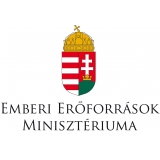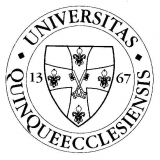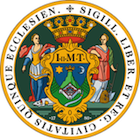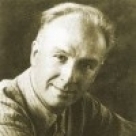Main Sponsors
-
 Reiso Pécs
Reiso Pécs -
 Hotel Lycium****
Hotel Lycium**** -
 Pécs ZOO
Pécs ZOO -
 http://www.mecsekegyesulet.hu/
http://www.mecsekegyesulet.hu/ -
Doro Ékszer
-
 Hetényi Pincészet
Hetényi Pincészet -
 Zsályaliget Élménypark
Zsályaliget Élménypark -
 Fabrik Barkács Szaküzlet
Fabrik Barkács Szaküzlet -
 Katica tanya
Katica tanya -
 E.ON Hungary
E.ON Hungary -
 http://www.ipark-pecs.hu/
http://www.ipark-pecs.hu/ -
 https://www.otpbank.hu/otpklub/Fooldal
https://www.otpbank.hu/otpklub/Fooldal -
 http://www.pecsibalett.hu/hindex.html
http://www.pecsibalett.hu/hindex.html -
 www.lakics.hu
www.lakics.hu -
 Gépszer
Gépszer -
 http://www.kormany.hu/hu/emberi-eroforrasok-miniszteriuma
http://www.kormany.hu/hu/emberi-eroforrasok-miniszteriuma -
 http://www.pnsz.hu/
http://www.pnsz.hu/ -
 http://www.pecs.hu/
http://www.pecs.hu/ -
 Mischl Autóház
Mischl Autóház -
 Öko-Trade Ltd
Öko-Trade Ltd -
 Bóly and Vicinity Savings Bank
Bóly and Vicinity Savings Bank -
 Mecsekerdő Forestry Ltd
Mecsekerdő Forestry Ltd -
 http://www.deltakarek.hu/
http://www.deltakarek.hu/ -
 University of Pécs
University of Pécs -
 http://kloe.hu/
http://kloe.hu/ -
 http://www.lafarge.hu/
http://www.lafarge.hu/ -
 http://www.gondoldo.hu/
http://www.gondoldo.hu/


MAESTRO! Master quintet at the new concert hall
29 Jan 2011. 18:00 | Kodály Centre
MAESTRO! 2010/2011 |
Orchestra
Pannon Philharmonic OrchestraConductor

Howard Williams
One of Britain’s most experienced conductors on the international platform, Howard Williams has covered a formidable range of work both in the opera house and concert hall, with a quite exceptionally large and broadly-based symphonic repertoire and over seventy opera titles to his credit.
In the UK, he has… More
Soloist

Roland Szentpáli
tuba
About the Programme
Program:
Wagner: The Flying Dutchman – overture
Vaughan Williams: Tuba Concerto in F minor
Sibelius: En Saga, op.9
Brahms: Symphony No.2 in D major, op.73
The musicians of the Pannon Philharmonic,
the chief conductors of the orchestra in the past and today,
the symphonies of Brahms,
the young, gifted soloists of Hungary, and
… YOU!
Richard Wagner’s operas mainly concentrate on never-solved mysteries, like The Flying Dutchman. This opera is a step ahead to a music drama, in which the orchestra is an equal partner of the singers, the interpreter of their fate through the leading motives. In the overture, two opposite musical materials face each other: the motive of the cursed Dutchman, adrift on the seas, and looking for salvation – and the redempting Senta’s melody that is turning into a winning one, implying the ending of the whole opera.
The Tuba Concerto by the English Vaughan Williams presents a soloist, none of the usual concert repertoire. And although at the time it’s writing (1954), the concerto was considered as a strange idea of the elderly composer, it quickly became one of his most popular works – and an indispensable piece of the tuba concert repertory. The first movement (Prelude) is fresh, march-like music with virtuoso runs; the Romanza is for lyrical beauties in the oddly high registers; and the German rondeau finale (Rondo alla tedesca) takes a bow to the Viennese Classical masters.
Jean Sibelius has been and is considered by the Finnish as their very own, although he never collected and used Finnish folk music tunes, wasn’t really Finnish by origin, and even his mother tongue was Swedish. So is the title of his symphonic poem, written in 1892. The composer himself gave the clue to the deciphering of his Tale’s meaning: “I have gone through many painful experiences. In this work I open my soul so, as never in others”.
Johannes Brahms sported a strict self critique for his own compositions, elided a significant part of his juvenile works, to avoid that they as imperfect creations get into the hand of posterity. His art is typically a product of the second half of the 19th century; Brahms didn’t care about the 1830s’ revolutionist ideas but he acted as preserver of the German national traditions, turned back to the Viennese Classical and earlier masters’ heritage. The in 1877 written Symphony No.2 got the “pastoral” attribute. The four movements, completing each other, speak on the voice of idyll, lovesick pain, folksy cheer, and drunken joy.



































